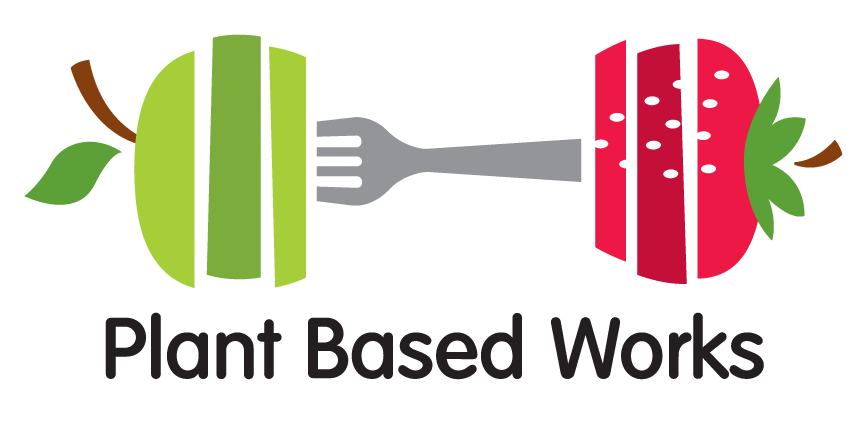Plant Based
What is a Whole Food Plant Based Diet?
Why eat a whole food plant based diet?
This WFPB diet has many benefits such as weight loss (getting you to a healthy weight), lower your cholesterol, lower your blood pressure, and lower blood sugar. It can prevent and reverse heart disease, hypertension and diabetes. It might even help with cancer and it helps joint pain and IBS. The solution is literally at the end of your fork.
What can you eat on a whole food plant based diet?
1. Non-starchy vegetables: Broccoli, carrots, cauliflower, celery, lettuce, mushrooms, onions, tomatoes, zucchini just to mention a few.
2. Starchy vegetables: Potatoes, sweet potatoes, corn, peas, butternut squash.
3. Fruit: Apples, bananas, blueberries, strawberries, grapes, mango, oranges, kiwi, papaya, pineapple and so many more.
4. Legumes: Beans (black, kidney, northern, garbanzo/chickpea, pinto, cannellini, lima, lava, navy, mung, soy, edamame and cranberry beans) and lentils and peas.
5. Whole Grains: Brown, red, white, black and wild rice, amaranth, barley, buckwheat, farro, bulgur, oats, millet, rye, sorghum, freekeh, kamut, spelt, quinoa, teff, you get the idea.
There’s so many more in each category.
The ideal plate would be a 1/4 legumes 1/4 whole grains or starchy vegetables and 1/2 non starchy vegetables and some fruit for dessert.
Where to Start.
Next find the plant based expert who is specialized in your disease. For instance, Dr Esselstyn for heart disease. Buy their book. For general all-round diseases there is “How Not To Die” by Dr Greger. And then buy an all-round general WFPB book like Dr McDougall’s “The Starch Solution”. Watch Forks Over Knives and Eating You Alive.
Start eating towards good health. Clean out your cupboards and buy your vegetables. Learn to cook with plants here at plantbasedworks.com. Start to move even if it is only a little. Like taking the stairs or walking around the block. Be kind to yourself. Keep at it. It took me a few rounds to get proficient, hence this website to help you avoid a couple of the pitfalls I have already explored.
The benefits of eating a Whole Food Plant Based Diet.

Living Healthy with Diabetes

Better sleep.

It helps you lose weight and can help you combat obesity and food addiction.

It can lower your cholesterol. It is known to reduce the risk of heart disease and to reverse it.

It can lower blood pressure. It is known to reduce the risk of hypertension and reverse it.

It can lower your blood sugar. It is known to reduce the risk of type II diabetes reverse it.

It can lower inflammation in your body and can lessen joint pain.

It can help with gastrointestinal problems.

It can help with skin problems such as acne.

It can help you achieve a healthy gut biome.

It can help with acid reflux.

It can help with asthma and allergies.

It can help with many many other ailments.
Remember this is a dietary lifestyle NOT a diet. Be kind to yourself.
Some tips and tricks.

Water sauté your meals don't use any oil! You can also use veggie broth.

Think about what you already cook and change your recipes to plant-based. For instance, replace meat with beans and eggs with tofu.

Use canned and frozen vegetables, they are just as good as fresh they are canned and frozen at the peak of the ripeness.

Get spicy! Use different herbs and spices to flavor your food.

Mushrooms, miso and nutritional yeast give you that savory umami flavor.

Try not to drink your calories. Drink lots of water and green tea. Avoid juices and sodas.

Batch cook when you make potatoes, sweet potatoes, rice, beans and lentils. Make extra for another meal or extra so you can freeze them.

Many stores have pre-cut veggies and frozen rice and frozen quinoa and other frozen whole grains, keep them on hand for quick meals.

Buy canned low sodium or no sodium beans. Buy garbanzo beans (homemade hummus is really really good).

And when you have extra veggies cut them up and place them in the oven and roast with no oil. Or cut them up and freeze them for the next time.

If your family is not plant based yet cook the meat/chicken/fish separately. Discuss with them that this is very important to you and your health.

Try things you may not have tried before I like tofu, tempeh, nutritional yeast, farro, amaranth, teff etc.

If you bake replace the eggs and oil. The oil can be replaced with applesauce, puréed prunes or tofu. Replace the egg with a flax or chia egg.


